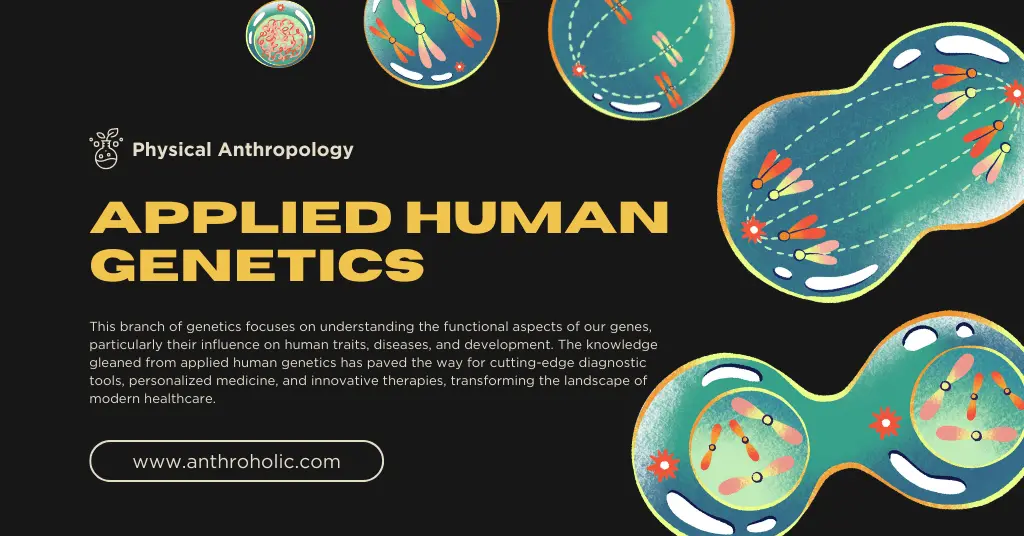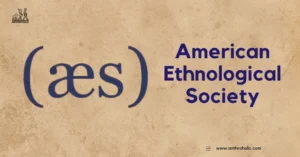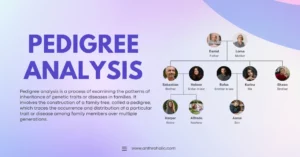AI Answer Evaluation Platform Live Now. Try Free Answer Evaluation Now
Applied Human Genetics
The world of genetics has seen rapid advancements in recent years, with the field of applied human genetics emerging at the forefront. This branch of genetics focuses on understanding the functional aspects of our genes, particularly their influence on human traits, diseases, and development. The knowledge gleaned from applied human genetics has paved the way for cutting-edge diagnostic tools, personalized medicine, and innovative therapies, transforming the landscape of modern healthcare.

The Science of Human Genetics
Brief History of Human Genetics
The foundations of human genetics can be traced back to the 19th century, with the pioneering work of Gregor Mendel on the inheritance patterns of pea plants (Bateson, 1909). This laid the groundwork for the development of the field of genetics, which progressed rapidly in the 20th century with the discovery of DNA’s double helix structure by James Watson and Francis Crick in 1953 (Watson & Crick, 1953). The Human Genome Project, completed in 2003, was a monumental achievement in genetics, mapping the entire human genome and providing a comprehensive blueprint for understanding human biology and disease (International Human Genome Sequencing Consortium, 2004).
The Human Genome: The Blueprint of Life
The human genome consists of approximately 3.2 billion base pairs that encode for roughly 20,000-25,000 protein-coding genes (Genetics Home Reference, 2021). These genes provide instructions for the synthesis of proteins, which are the building blocks of our cells and the key players in the regulation of cellular processes.
| Component | Percentage of the Genome |
|---|---|
| Protein-coding genes | 1-2% |
| Non-coding RNA genes | <1% |
| Regulatory elements | 10-15% |
| Transposable elements | 45% |
| Introns and other non-coding | 30-35% |
| DNA |
Genetic Variation: The Spice of Life
Genetic variation is the result of differences in DNA sequences among individuals. These variations can be as small as single nucleotide polymorphisms (SNPs) or as large as structural variations that involve thousands of base pairs (Mills et al., 2011). Genetic variation is essential for the evolution and adaptation of species, as well as for understanding the genetic basis of human traits and diseases.
Applications of Applied Human Genetics
Medical Genetics
- Genetic Counseling: Genetic counseling is a process that helps individuals and families understand the potential genetic risks, benefits, and implications of genetic testing and information. Genetic counselors are healthcare professionals who have specialized training in medical genetics and counseling, and they work with patients to help them make informed decisions about genetic testing, family planning, and disease management (National Society of Genetic Counselors, 2021).
- Prenatal and Newborn Screening: Prenatal and newborn screening programs involve testing for specific genetic conditions before or shortly after birth. These screenings can help identify babies at risk for certain genetic disorders, allowing for early interventions and improved outcomes (American College of Obstetricians and Gynecologists, 2017). Prenatal screening options include carrier testing for parents, noninvasive prenatal testing (NIPT), and invasive procedures such as amniocentesis and chorionic villus sampling (CVS).
- Personalized Medicine: Personalized medicine is an approach that tailors medical treatments to an individual’s unique genetic makeup, aiming to improve the efficacy of therapies while minimizing side effects. Genetic information can be used to predict an individual’s response to certain medications, identify the most effective treatments for a specific condition, or even customize therapies based on a patient’s specific genetic alterations (National Institutes of Health, 2021).
Forensic Genetics
Forensic genetics is the application of genetics in criminal investigations and legal proceedings. DNA evidence can be used to identify suspects, confirm relationships, and exonerate the innocent. Advances in DNA sequencing technologies have made it possible to generate profiles from even small or degraded samples, greatly enhancing the power of forensic genetics (Butler, 2015).
Ancestry and Genealogy
Applied human genetics has also made significant contributions to the study of ancestry and genealogy. Genetic testing can provide insights into an individual’s ethnic background, trace migration patterns of ancestors, and identify relatives through DNA matching. Commercial DNA testing companies, such as AncestryDNA and 23andMe, have made it possible for the general public to access this information, fueling a growing interest in personal genealogy (Royal et al., 2010).
Ethical Considerations in Applied Human Genetics
A. Privacy and Discrimination
The increasing availability of genetic information raises concerns about privacy and the potential for genetic discrimination. Individuals might be at risk for discrimination in areas such as employment, insurance, and education based on their genetic profiles. Laws such as the Genetic Information Nondiscrimination Act (GINA) in the United States aim to protect against genetic discrimination, but ongoing vigilance is required to ensure that genetic information is used ethically and responsibly (National Human Genome Research Institute, 2021).
B. Designer Babies and Genetic Engineering
The possibility of editing human embryos to select specific traits or eliminate genetic diseases has sparked ethical debates surrounding the concept of “designer babies.” While this technology has the potential to prevent suffering caused by genetic diseases, it also raises concerns about eugenics, social inequality, and the potential unintended consequences of altering the human germline (Ishii, 2017).
C. The Question of Ownership
As genetic testing becomes more prevalent, questions of data ownership and control arise. Who owns an individual’s genetic information, and how should it be used and shared? Clear policies and guidelines are needed to ensure that the benefits of genetic research are maximized while safeguarding individual rights and privacy (Joly et al., 2017).
IV. Future Prospects of Applied Human Genetics
A. Gene Editing and CRISPR
Gene editing technologies, such as CRISPR-Cas9, hold immense potential for treating genetic diseases and advancing our understanding of human biology. As the technology continues to develop, it will be crucial to address ethical concerns and establish regulatory frameworks that ensure the responsible application of gene editing in both research and clinical settings (Doudna & Charpentier, 2014).
B. Genomic Data and Artificial Intelligence
The increasing availability of genomic data presents new opportunities for the application of artificial intelligence (AI) in the field of human genetics. AI algorithms can help analyze vast amounts of genetic data, identify patterns, and predict disease risk or treatment outcomes. This combination of genomics and AI has the potential to revolutionize diagnostics, drug discovery, and personalized medicine (Ching et al., 2018).
C. Public Education and Engagement
As applied human genetics continues to advance, it is essential to educate the public about the science, benefits, and potential risks associated with these technologies. Public engagement and dialogue will help ensure that the benefits of genetic research are shared equitably and that ethical concerns are addressed in a transparent and inclusive manner (Middleton et al., 2018).
Conclusion
Applied human genetics has come a long way since the days of Mendel’s pea plants, opening new doors in our understanding of human biology and the potential for personalized medicine, forensic applications, and ancestry studies. As we continue to unlock the secrets of our DNA, it is crucial to navigate the ethical challenges that accompany these advancements and foster public understanding and engagement. The future of applied human genetics holds great promise, and with responsible stewardship, it has the potential to transform our lives in countless positive ways.
References
- American College of Obstetricians and Gynecologists. (2017). Prenatal Genetic Screening Tests. Retrieved from https://www.acog.org/womens-health/faqs/prenatal-genetic-screening-tests
- Bateson, W. (1909). Mendel’s Principles of Heredity. Cambridge University Press.
- Butler, J. M. (2015). Forensic DNA Typing: Biology, Technology, and Genetics of STR Markers (3rd ed.). Academic Press.
- Ching, T., Himmelstein, D. S., Beaulieu-Jones, B. K., Kalinin, A. A., Do, B. T., Way, G. P., … Greene, C. S. (2018). Opportunities and obstacles for deep learning in biology and medicine. Journal of The Royal Society Interface, 15(141), 20170387. https://doi.org/10.1098/rsif.2017.0387
- Doudna, J. A., & Charpentier, E. (2014). The new frontier of genome engineering with CRISPR-Cas9. Science, 346(6213), 1258096. https://doi.org/10.1126/science.1258096
- Genetics Home Reference. (2021). What is the Human Genome Project? Retrieved from https://ghr.nlm.nih.gov/primer/hgp/description
- International Human Genome Sequencing Consortium. (2004). Finishing the euchromatic sequence of the human genome. Nature, 431(7011), 931–945. https://doi.org/10.1038/nature03001
- Ishii, T. (2017). Germ line genome editing in clinics: the approaches, objectives and global society. Briefings in Functional Genomics, 16(1), 46–56. https://doi.org/10.1093/bfgp/elv053
- Joly, Y., So, D., Osien, G., Crimi, L., Bobrow, M., Chalmers, D., … Zawati, M. H. (2017). A global public goods approach to the ownership of clinical and genomic data. Global Challenges, 1(1), 1600003. https://doi.org/10.1002/gch2.201600003



